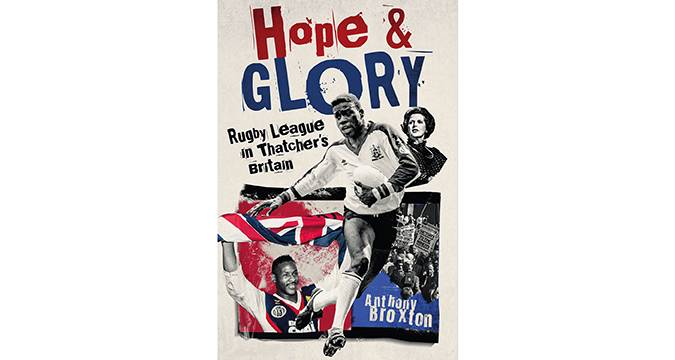 Hope & Glory – Rugby League in Thatcher’s Britain
Author: Anthony Broxton
Publisher: Pitch Publishing
RRP: £25.00
PP: 351 (hardback)
ISBN: 978 1 80150 455 3
Anthony Broxton is a prolific writer on politics and sport – or more specifically in the latter case, the sport of Rugby League.
His political focus, broadly speaking, is
Hope & Glory – Rugby League in Thatcher’s Britain
Author: Anthony Broxton
Publisher: Pitch Publishing
RRP: £25.00
PP: 351 (hardback)
ISBN: 978 1 80150 455 3
Anthony Broxton is a prolific writer on politics and sport – or more specifically in the latter case, the sport of Rugby League.
His political focus, broadly speaking, is Book Review: Hope & Glory – Rugby League in Thatcher’s Britain
 Hope & Glory – Rugby League in Thatcher’s Britain
Author: Anthony Broxton
Publisher: Pitch Publishing
RRP: £25.00
PP: 351 (hardback)
ISBN: 978 1 80150 455 3
Anthony Broxton is a prolific writer on politics and sport – or more specifically in the latter case, the sport of Rugby League.
His political focus, broadly speaking, is
Hope & Glory – Rugby League in Thatcher’s Britain
Author: Anthony Broxton
Publisher: Pitch Publishing
RRP: £25.00
PP: 351 (hardback)
ISBN: 978 1 80150 455 3
Anthony Broxton is a prolific writer on politics and sport – or more specifically in the latter case, the sport of Rugby League.
His political focus, broadly speaking, is 